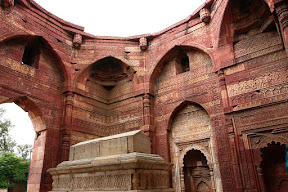 Hello friendos!
Hello friendos!I'm having quite an adventure. I've just finished my second week in India. Here are some tales, mostly clipped from my weekly reports I send the MIT PSC. For those that I haven't told, I'm in India working on a pilot for the open-source non-profit telemedicine project that I helped found called Sana (previously called Moca). It's now a CSAIL project, as we're in the process of being merged into Pete Szolovits' group.
I arrived late on July 3rd, and spent the 4th getting accustomed to life in Delhi. It's a different world here and I've never been exposed to such poverty. None of the cars have seat belts! I'm convinced that Delhi has no official traffic laws, because driving here is madness. It's just a surge of cars, trucks, bicycles, pedestrians, 3-wheelers, rickshaws, and elephants going every which way they please. No lanes, just a rough definition of what side of the road cars are supposed to drive on. I'm not joking about the elephant thing either, I was on the highway and a man was riding one. All the traffic was just swerving around it. Did I mention it's hot here?! Oh my god.
I kicked off the week starting on Monday with the opening talks for the mobile health workshop I am putting on at IIT. The poster that was advertised in the weeks leading up the talks is here: http://web.mit.edu/rryan/Public/sana/final_poster.jpg
It was very well attended -- Almost 45 students and faculty showed up. My first 1.5 hour talk was about Sana as an organization and our goals and next steps. The second 1.5 hour session was a technical overview of the platform for new developers.
It was very well attended -- Almost 45 students and faculty showed up. My first 1.5 hour talk was about Sana as an organization and our goals and next steps. The second 1.5 hour session was a technical overview of the platform for new developers.
The next 3 days were workshop sessions and about 20 students showed up for each.
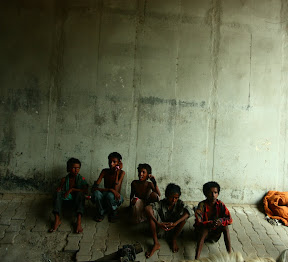 Sana is composed of 3 main parts, and each workshop focused on one part. I started each day at 10am with a 1 hour talk about the part we were focusing on that day and the various exercised and hands-on tasks I would have them do to get accustomed to the platform. We then split the group into about 4 or 5 groups and moved to a computer lab. The groups worked together to complete the tasks and myself, Sangeeta (a PhD student at IIIT-D that I've been working with over the Internet on Sana), and Amarjeet Singh (my host, professor at IIIT-D) all went between the groups and gave assistance. The workshops in general went 2 hours until 1pm, broke for 1 hour lunch, and then continued another 2 hours until 4 or 5pm, depending on when the students finished. The results of each workshop were very positive. We made each student group a mix of younger (1st/2nd year) and senior students, and students who had previous Sana experience so the younger students could learn from the older ones.
Sana is composed of 3 main parts, and each workshop focused on one part. I started each day at 10am with a 1 hour talk about the part we were focusing on that day and the various exercised and hands-on tasks I would have them do to get accustomed to the platform. We then split the group into about 4 or 5 groups and moved to a computer lab. The groups worked together to complete the tasks and myself, Sangeeta (a PhD student at IIIT-D that I've been working with over the Internet on Sana), and Amarjeet Singh (my host, professor at IIIT-D) all went between the groups and gave assistance. The workshops in general went 2 hours until 1pm, broke for 1 hour lunch, and then continued another 2 hours until 4 or 5pm, depending on when the students finished. The results of each workshop were very positive. We made each student group a mix of younger (1st/2nd year) and senior students, and students who had previous Sana experience so the younger students could learn from the older ones. During the workshops, a group of about 10 summer interns from IIIT-D who had already been working on extensions to the Sana platform were able to get hands-on tech support from me. This was a major win for their productivity because previously I had only interacted with these students over the Internet, and the going was very slow. Each one of them made major progress while I was available to help them for the 4 days. They are all working on some very cool extensions to Sana.
During the workshops, a group of about 10 summer interns from IIIT-D who had already been working on extensions to the Sana platform were able to get hands-on tech support from me. This was a major win for their productivity because previously I had only interacted with these students over the Internet, and the going was very slow. Each one of them made major progress while I was available to help them for the 4 days. They are all working on some very cool extensions to Sana.
In my spare time I worked with Sangeeta to develop and complete a new feature where when the phones submit cases to our servers, the server can run an algorithm on the data to produce an automatic diagnosis. This is meant to supplement real diagnosis by a doctor, and can provide instant feedback to the health worker.
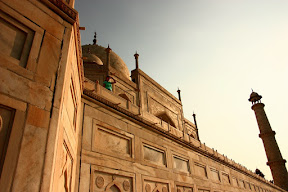 Ankur Puri, a Sana team member working on a project with E-HealthPoints will use this in Punjab to do risk assessment for cardiovascular disease. A community health worker will go door to door in a village with a phone and fill out a survey. When they submit it to the server, the server instantly calculates their risk based on an algorithm on the supplied data, and returns their percentage risk for cardiovascular disease. If they are at high risk, the health worker can schedule them for an appointment at a clinic. Cardiovascular disease is special in that its a chronic disease that untreated, becomes acute. In many villages in Punjab, nobody even knows that they are at risk for CVD, let alone what CVD is. Raising awareness is first priority for improving health outcomes here, and this is a good first step to making that process affordable. This project in Punjab is extremely similar to our project in Bangalore, so this will help there as well.
Ankur Puri, a Sana team member working on a project with E-HealthPoints will use this in Punjab to do risk assessment for cardiovascular disease. A community health worker will go door to door in a village with a phone and fill out a survey. When they submit it to the server, the server instantly calculates their risk based on an algorithm on the supplied data, and returns their percentage risk for cardiovascular disease. If they are at high risk, the health worker can schedule them for an appointment at a clinic. Cardiovascular disease is special in that its a chronic disease that untreated, becomes acute. In many villages in Punjab, nobody even knows that they are at risk for CVD, let alone what CVD is. Raising awareness is first priority for improving health outcomes here, and this is a good first step to making that process affordable. This project in Punjab is extremely similar to our project in Bangalore, so this will help there as well.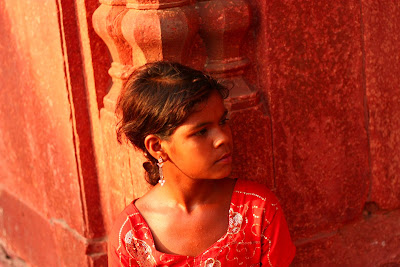
It was incredibly exciting to work with these students hands-on because I could see the true power of open-source beginning to manifest itself in our project. These students are working on features that have been too low-priority for our team due to manpower issues, but despite cultural, geographical, and linguistic boundaries we can collaborate to improve the platform. As a result everyone using our software benefits. Furthermore, I formed personal relationships with these students, which will only help us have better communication remotely in the future.
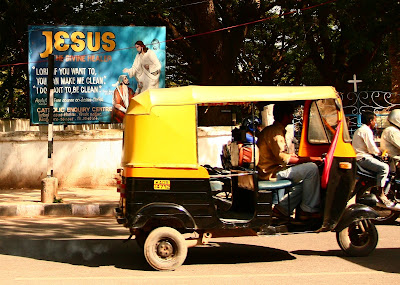 The workshops were essentially very successful all around. There are now 30 some students in India who have a good overall knowledge of how Sana works. A core of those students are already skilled at writing code for the platform. There were a number of 1st and 2nd year students in the group who got very valuable experience from the workshops. For example, they had no background with mobile application development coming in, but now they have the background necessary to start writing their own Android applications. They could sell these themselves in the Android market. Furthermore, it de-mystified the technology for many of them, which is important for their development as software engineers.
The workshops were essentially very successful all around. There are now 30 some students in India who have a good overall knowledge of how Sana works. A core of those students are already skilled at writing code for the platform. There were a number of 1st and 2nd year students in the group who got very valuable experience from the workshops. For example, they had no background with mobile application development coming in, but now they have the background necessary to start writing their own Android applications. They could sell these themselves in the Android market. Furthermore, it de-mystified the technology for many of them, which is important for their development as software engineers.
New student orientation was going on Friday, so on Friday and Saturday I entered full tourist mode. Friday I did a day-tour of Delhi and Saturday I did a day tour of Agra to see the Taj Mahal. I can't believe all the huge and breathtaking structures that exist around here. It seems that when these were being built, India had only an agrarian society and basically the only way for the emperors to keep their people employed and busy was to have them building new palaces year round.
On Monday of my second week, I flew to Bangalore.
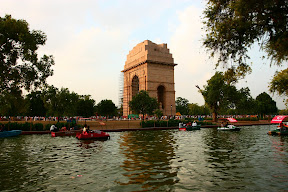 The weather here is a little more like Palo Alto, CA compared to the hades that Delhi was. Jeans and a t-shirt are very comfortable here. I arrived mid-day on Monday and Sidhant Jena, a fellow Sana team member, picked me up at the airport. We went straight to Narayana Hrudayalaya hospital to meet with the doctors with whom we will be running our oral cancer pilot.
The weather here is a little more like Palo Alto, CA compared to the hades that Delhi was. Jeans and a t-shirt are very comfortable here. I arrived mid-day on Monday and Sidhant Jena, a fellow Sana team member, picked me up at the airport. We went straight to Narayana Hrudayalaya hospital to meet with the doctors with whom we will be running our oral cancer pilot.The doctors at Narayana are working on a system they call Onconet, which is an agreement between Narayana and surrounding dental hospitals in which patients at the dental hospitals who are diagnosed with oral cancer via tissue cultures are referred to Narayana for treatment.
To make matters worse, Android does not currently support every language script in the world -- it only supports major langauges. This means it is not currently possible to display Kannada script on the phone. I immediately began work on extending Sana to support workarounds. After a quick hacking session, we are now able to record voice prompts for every question. I replaced some of the text with pictorial labels (e.g. forward/back arrows instead of "Next" and "Previous") and made the first voice prompt on screen play when you turn the page. These changes will hopefully make the application much more usable for the less-literate health workers.
Sidhant left to return to Delhi for a family function, and returned on Wednesday. That day, we met again with Dr. Moni because he had just spoken with a Gates-grant NGO who was very interested in learning more about our software. The most recent Gates grant request for proposals was exactly what we do, applications for healthcare on mobile phones, so we hope that working with this NGO will help increase the chances for the grant proposal we submitted. We scheduled a meeting and demo with them for July 26.
On Thursday, Sid and I had a big day. We started the morning at the Indian Institute of Science (IISc), which is a lot like MIT except only the science part whereas IIT is more the engineering part of MIT. They only offer post-graduate education, and tend to stay in the theoretical rather than applied.
Founded in 1909, IISc has a beautiful campus, secluded from the busy streets of Bangalore by tall walls and thick vegetation. In the first days, they took seeds from plants around the world and planted them everywhere in their campus. 100 years later, it's a melting pot of tree races. The African trees were like none I'd seen before.
At IISc, Sid and I met with Professor Gopi and his group in the Computer Automation Laboratory. We gave them a quick technical introduction to Sana and tried to find contact points at which it would make sense to work together. After our visit at IISc, we went to GE's India campus to meet Oswin Varghese, the pioneer of the portable ECG.
We showed him Sana and told him about what we are trying to do. He was very excited about working together and wanted to form a GE Partnership. At the veryleast, he was incredibly positive about getting his ECG systems working with Sana. We scheduled a meeting next week with more of their engineering team, and will demo it again then.
I am excited to imagine what a GE partnership could be if the very least is to support their devices. He said that they have had problems getting their ECG's out there. We think this is in part because it is not clear who needs the product. If a modern hospital uses it, they will already have an ECG machine that is non-portable. If a general practitioner uses it, they won't trust its output because they don't have the skills necessary to understand it, so instead of risking it they will send the patient to a specialist. The best use case is telemedicine, except they don't have a good way to get the data from rural areas to hospitals.
Yesterday (Saturday) Sid and I did trials of the phone with healthworkers. First, we visited KLE Dental Hospital and showed the phones to about 12 doctors. These doctors will be doing assessment camps in Bangalore, and they will use Sana to enroll patients in the system and screen them for oral cancer. After showing them the app, we passed around 3 phones and let them all try to use them. Overall the results were positive.
 It turns out that when they do rounds, they check on each patient using a form. They then call the doctor and tell her over the phone how each patient is doing. The paper forms are filed, but are often misplaced. This is a perfect
It turns out that when they do rounds, they check on each patient using a form. They then call the doctor and tell her over the phone how each patient is doing. The paper forms are filed, but are often misplaced. This is a perfectapplication for Sana with a touch-screen tablet or similar form factor. The doctors can monitor their patients from their office and the forms are automatically digitally filed in the patient's medical record. We need to invest some R+D money into buying some Android tablets to experiment with, because this is a use case we have not explored.
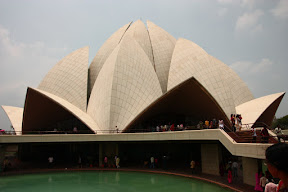
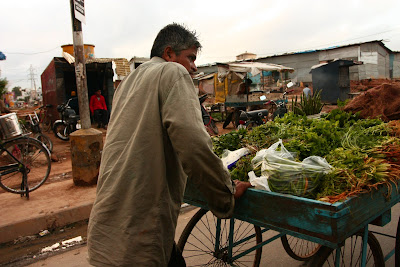
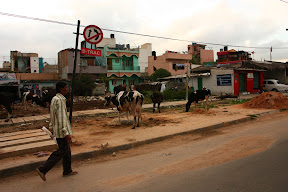
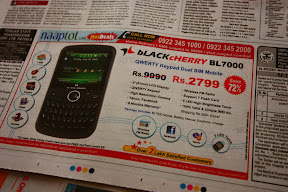
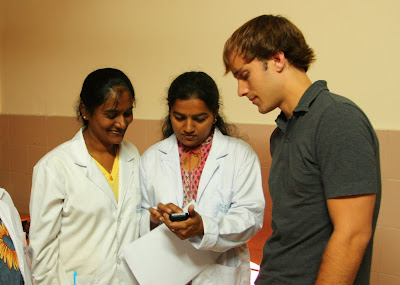



No comments:
Post a Comment